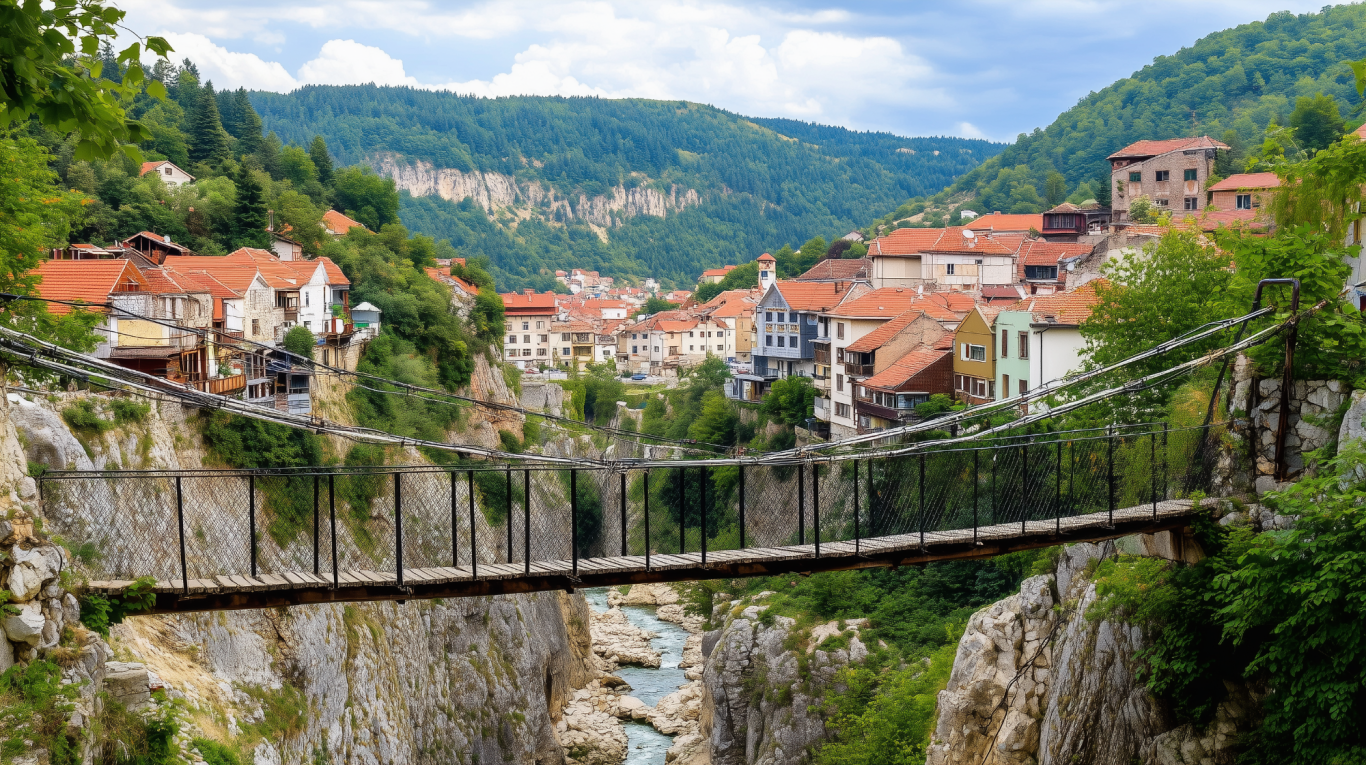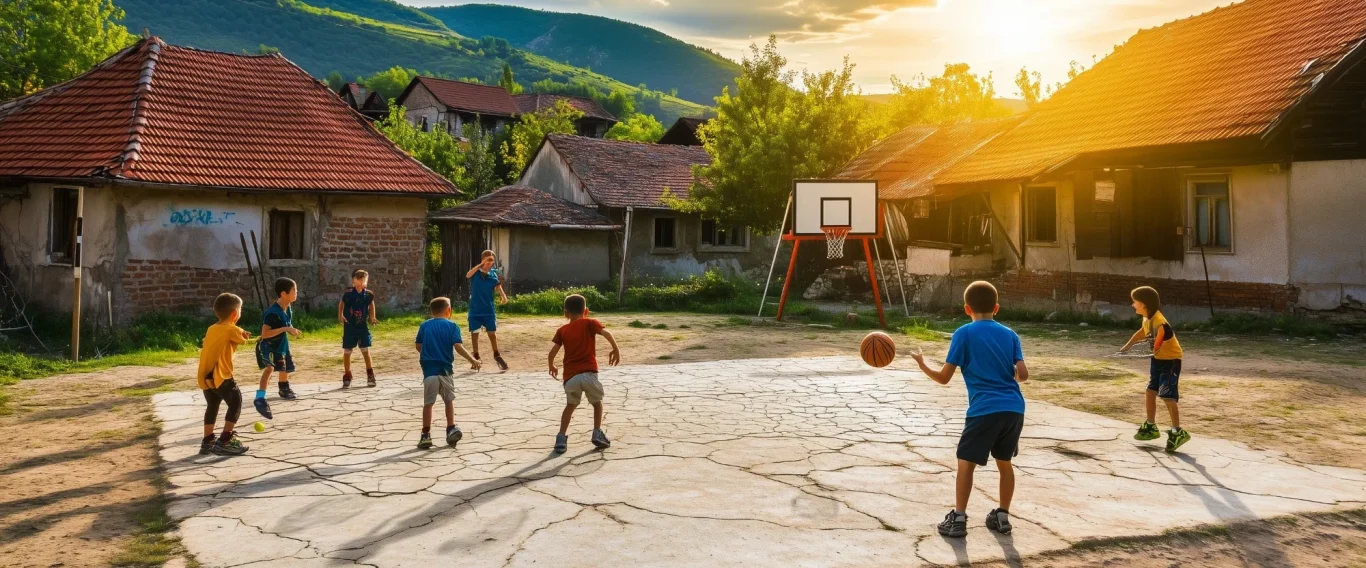July 12th 2025

Bridges of Serbia: From Bread to Courts
I hadn’t ever given Serbia much thought. As a child growing up in a hushed German town, it was just another name on a map — a place entwined with the news, far-off headlines, stories that seemed remote. Balkan conflict. Serbia news. Reports that read as if they were too complex to fully grasp.
But I began to feel differently the day I stumbled upon an old picture of Belgrade travel, a city of ancient streets and modern towers with a river snaking through it — a city of contrasts, of contradictions. There was an organic energy there, some edge to it, something human. I started reading. I learned about its Serbian people resilience, about how Serbian traditions had persisted in the face of years of strife, about the sports passion that united everyone from children in tiny villages to global champions.
A question began to occur to me: What is Serbia, really? Not as the newspapers had told me. Not what politicians had been fighting about. But what the people of Serbia retained in their hearts — their songs, their tables, their courts, their hopes. So I thought I’d start to look for it. My plan was simple: rove around Serbia and talk to people; listen to their stories while tasting their food and watching their games. I wanted to know how a country as defined by conflict could still believe so strongly in hospitality, in community, in pride.
In a divided world, perhaps this journey could teach me something about building bridges — across cultures, across languages, across memories of hurt. That’s what I wanted to do – to hear, to learn and to give. And at the start of this story materializes this story, a tale of tradition and sport and soul — and the people who carry them forth in Serbia.
Tradition & Culture
I was struck not by the grand monuments and the wide urban boulevards of the capital city of Serbia, but by the small. A woman across the way sweeping the steps to her house early in the morning, giving me the nod. A grandfather tying fresh herbs above his door, to bring good luck. The scent of baking bread, combined with the smoky wood fires in shantytown bakeries.
Tradition here is not a relic in a museum. It’s alive, it breathes in all corners of everyday life.
I was asked to a Slava, a family celebration honoring a family’s patron saint. And there I witnessed the depth, and the ancientness, of the rituals. There was a candle, prayers, bread broken carefully and passed out to every participant. The host warmly welcome me as if I were his relative,a stranger.
The table was laden with food: Roasted meat, homemade cheese, plates of pickles, honey, and small glasses of rakija that never seemed to empty. Every time I attempted to respectfully refuse, a grinning uncle forced another glass into my hand.
“Drink,” he laughed, “for today you are family.
There was music as well — old folk songs sang softly at first, and then more loudly, more exuberantly, as the night went on. A man produced a little accordion and in no time at all, everyone was singing along, stamping their feet, clapping their hands in time.
They later taught me to dance the kolo, the circle dance where neighbors join hands, step by step, as the circle appears to hold the entire village together.
I remember thinking, How powerful that was. That in a land touched so deeply by hardship, people still had a way of standing together, of joining arms and taking the next step forward, however small.
At the market the next morning that spirit of hospitality was maintained. Women gave me samples of jam they made in their kitchens; a man boasted about growing his own peppers from seeds his grandmother gave him. Another woman demonstrated how to make ajvar, a slow roasted red pepper spread made over open flame.
No one seemed rushed. Each transaction was also a conversation, a small gesture of connection.
It was there that I came to understand that tradition in Serbia is not history. It is in resistance to forgetting. Each shared dish, each dance, each blessing, Muniz said, is a way of saying: We are still here. We still care.
And watching children soaking in these dances, sweeping old people telling old stories around a flaming log fire in a hut, I saw something I hadn’t seen properly before: tradition was not the prison of Serbia. It was taking it forward, large and strong, like an old melody that was doing good to hear.

Sport & Pride
After drinking, listening and dancing for days on end, there was just one thing left I needed to see if I were to understand Serbia: its obsession with sport.
From dusty village playgrounds to national stadia, it seemed everyone had a story about a game, an aim, a match. Children in the parks played basketball shots into battered hoops, dreaming of making it as the next big star. On these dusty clay courts, young players whacked tennis balls around until sunset, inspired by champions like Novak Djokovic, who had shown the world what determination could accomplish.
I went to a nearby tennis club, where the cracked courts and faded nets reflected their soccer fields. But there was a twinkle in the kids’ eyes as they practiced, even without perfect gear. We don’t have a lot, but we have some heart,’” one coach told me. That’s enough.”
That notion — that pride is about not letting go, not about showing off — stuck with me. Serbia’s sports heroes are beloved not just for winning, but because they stand for something more:
The will to keep going.
One told me proudly about his father having constructed a basketball hoop from scrap metal during difficult times so he and his friends could play. And then there was another girl, who handed me an old tennis racket, so patched up with tape that it looked like a quilt, but it still worked, and it still made her happy.
Here, sport is about more than playing for fun. It is a way to believe. To have hope that things can be good tomorrow. The way that teamwork and talent can surmount fear.
Standing at the tennis court and seeing all of the children in line waiting to serve, I thought once again about the circle dance I watched during the Slava. Different steps, different rhythms — but the same spirit. Together, no matter what.
Serbia had taught me that pride was not arrogance but strength. A feeling that after the fight you could still stand up, tell a joke, teach the next generation, and get the game back on.
And perhaps that is Serbia’s greatest strength:
Not overlooking the past, but dancing forward, all the same.
Not pretending that the coming hardships will be easy, but raising a racket — or a glass — to the future.
Together.
If you ever ask what having a foot in two cultures looks like, think of Serbia.
Think of the crusty bread, the circle dance, the mended tennis racket, the voices singing in the dark.
In these small things, you can feel a story of hope.
One step, one song, one serve at a time.

Frequently Asked Questions
1. What is a “Slava” in Serbian culture?
A Slava is a ritual feast that celebrates the family’s patron saint, based on deep-rooted customs. It consists of rituals, prayers, the sharing of bread, and offers of true Serbian hospitality. It also speaks to the depth of community and family values within Serbian culture.
2. What makes Serbian customs unique?
Serbian customs are distinct because they continue to inform daily life — from homemade recipes to circle dances like the kolo. And these traditions are not only kept alive, but actively celebrated, making children and grandchildren feel like they have a place in our cultural identity.
3. Why is sport big in Serbia?
In Serbia, sports, especially basketball and tennis, are a symbol of hope, of resilience. The likes of Novak Djokovic make our children dream and to believe, to work in a team and to fight against odds.
4. What do travellers say about Serbian hospitality?
Serbian hospitality is friendly and open-hearted, according to many travelers. It seems that anywhere you go in Serbia, whether at the giro joint around the corner, in a stranger’s living room, or in the quiet of the woods, you will be offered food that falls in the category of welcome and a desire to connect—as well as the generosity that comes from a people whose land has been a crossroads for thousands of years.
5. What is the purpose of this Serbia travel blog?
My motive is to create narrative bridges and my interest is to discover Serbia’s values, sporting spirit and hospitality. My intention is to capture and share genuine Serbian culture to provide others with a more well-rounded view than will be found in the headlines.
Disclaimer: This story and its accompanying images were created with the assistance of artificial intelligence tools for storytelling and visualization purposes.